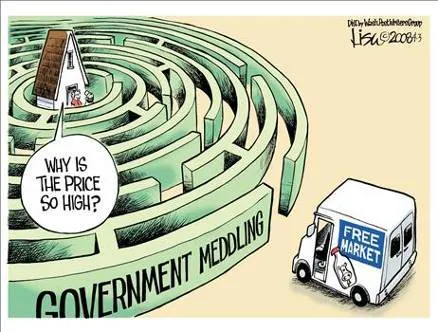
Overveiw
This week, I read chapters 5, 7, and 9 of "The Seen, the Unseen, and the Unrealized" by Dr. Bylund. This reading offered some very thought provoking ideas about economics and the way that value is transfered between different people in the economy. Dr. Bylund essentially goes into super specific details about concepts that many business students learn in microeconomics and takes them a step further to illistrate how the market functions.
Chapter Five
In chapter five, Dr. Bylund goes into detail about a phenominon that he calls the "seen", "unseen", and "unrealized". He uses an example provided by a nineteenth century French economist named Frédéric Bastiat that involves a shop owner who has a son that broke a window in his shop. The shop owner now has to pay to repair the window which is the "seen" effect. In addition however, there is also a ripple effect that Bastiat calls the "unseen" that follows the money given to the window repairer after the window repairer later spends it on something else and then so on. This "unseen effect" basically shows how one transaction can lead to many other "unseen" transactions that create value in the future. In contrast, the "unrealized" effect is what would have happened to the shop owners money if the windo had never been broken. Bastiat says the shop owner would have spent the money on new shoes which means that the opportunity cost of getting a repaired windown was the pair of new shoes. The "unrealized" is basically how the "seen" would be different" which would drastically effect how we follow the money in the "unseen" or ripple effect from the different transaction. I think that his point about the "unrealized" is that people using rational decision making to money spending decisions can have major ripple effects on the economy.
*Chapter 7
In this chapter, Dr. Bylund shifts gears and discusses the impact of taxation and regulation on the economy. One of the ideas that I understood from this passage was the the idea of using regulation to either steer or prohibit production. First of all, an example of prohibition would be using regulations to make it illegal to pay an employee less than the minimum wage or imake it illegal to sell certain products in the market. In contrast, steering regulations do not make things illegal or legal, but attempt to make something easier or harder to produce and/or purchase. Dr. Bylund refers to these as “carrot” (incentive)and “stick”(disincentive). A carrot incentive example could be the government giving subsidies to a solar energy company to increase production of renewable energy. In contrast, an example of a stick incentives could be placing a tax on oil and gas to make renewable energy seem more attractive to producers by comparison. Essentially,the government can use regulations and taxation to alter the natural flow of the market for what the government seems is fit.
Chapter 9
Chapte 9 goes more into detail about about the "unrealized" effects that government regulations can have on the economy. From my understanding, the passage mainly has us ponder how resources may have been allocated differently without government interference and question wether consumers would be better off with or without this government interference. Dr. Bylund even states that most consumers have no idea how these policies can affect the way that they spend their money. It is suprisingly interesting to think about how there may be completely unrealized products or innovations due to government regulations, but that there also may be products and innovations that only occured because of government medling. While Dr. Bylund definitely has a bias towards completly free markets, nobody can truly know what the best alternataive for humankind is. I personally do find myself to generally agree with Dr. Bylund on these issues, but I would say that I am more moderate on my positions than he is. Overall, this was defiently a thought provoking read about the way the market functions.
Works Cited
Bylund, Per L. The Seen, the Unseen, and the Unrealized: How Regulations Affect Our Everyday Lives. Studies in, 2018.